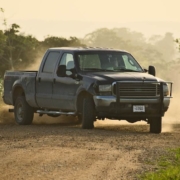NAPA Know How: How to Choose the Right Off-Road BatteryNAPA Know How Blog
[ad_1]
Choosing the right off-road battery can mean the difference between making it home at the end of a long day on the trail and having to hike back to civilization to find a jump-start. Depending on how or what you’re driving, a standard automotive battery may not be powerful enough for the number of accessories being used on your rig and its lighting demands.
How can you make the best battery decision for your truck or SUV? Let’s take a look at the best options.
Take Stock of Your Setup
The factory battery in your vehicle was designed to handle the specific demands of its stock lighting, heating, cooling and engine systems. Once you add accessories that pull extra power, you need to reevaluate whether your existing alternator and battery setup are still up to the task or if you need to switch to a larger off-road battery system.
Some examples of equipment that can punish your vehicle’s electricals include winches, auxiliary lighting, air compressors and stereo systems. If you’re running one or more of these, check to see if your existing battery can withstand the cumulative load.
Double Up or New Tech?
A common choice for off-roaders seeking additional battery life is to add a second 12-volt battery to the mix. This works fine as long as you have the space under the hood or in the cargo area to mount a second unit that’s protected from potential damage.
Modern trail drivers might find a better option with advanced battery tech. Instead of doubling up, you can use a traditional, sealed lead-acid battery that’s designed to produce deep cycle power that can withstand a heavy load.
An even better option for an off-road battery is to select an absorbed glass mat design. AGM batteries are sealed, so they won’t spill if your vehicle tips sideways or sits at an extreme angle on a hill. They are often smaller than similarly powerful lead-acid batteries and offer better resistance to the vibrations you encounter on a rough trail.
Remember: Choosing the right battery is a combination of understanding your needs, finding an option that fits your budget and making sure that your choice is compatible with the space and connections your vehicle has for mounting a battery. Just as you’ve modified your truck to handle rougher conditions than the factory intended, so too can you upgrade your electrical system to deal with whatever adventure might be thrown your way.
Check out all the batteries available on NAPA Online or trust one of our 17,000 NAPA AutoCare locations for routine maintenance and repairs. For more information on off-road batteries, chat with a knowledgeable expert at your local NAPA AUTO PARTS store.
Photo courtesy of Pixabay.












